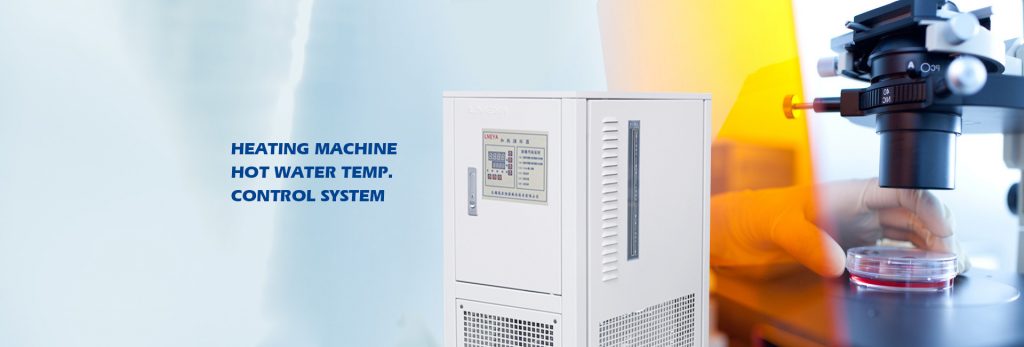Industrial Chillers vs. Thermostatic Baths for Reactor Cooling

- How to Upgrade an Old Chiller to Improve Efficiency
- Chiller Tanks Comparison Expansion Tank vs Buffer Tank
- Expansion Tanks in Semiconductor Chillers
- How Explosion-Proof Chillers Work Principles and Design
- Free Cooling vs Mechanical Cooling
- Chiller Custom Service Solutions One-Stop Service
- The Role of Chillers in Hydrogen Production
- What Is the Lifespan of a Chiller
- August 2025
- Juli 2025
- Juni 2025
- Mai 2025
- März 2025
- Februar 2025
- Januar 2025
- Dezember 2024
- November 2024
- Oktober 2024
- September 2024
- August 2024
- Juli 2024
- Juni 2024
- Mai 2024
- April 2024
- März 2024
- Februar 2024
- September 2023
- Juli 2023
- Juni 2023
- Mai 2023
- Januar 2023
luftgekühlte Kältemaschine Kühler Kältemaschinen Kalte Montage Gefrierschrank Kaltwassersatz Kühl-Heizungs-Umwälzpumpe Kühl-Heizsystem dynamisches Temperaturkontrollsystem Gefrierschrank Heizungsumwälzpumpe Industriekühler industrial freezer Industriekühlschrank jacket reactor Niedertemperaturkühler news pharmaceutical chiller process chiller reactor chiller reactor cooling reactor cooling heating Reaktorheizung Kühlung Kältethermostat Schneckenkühler Halbleiter-Kühlgerät Halbleiter-Testkühler sundi tcu Temperaturkontrolle Prüfkammer Thermostat Ultra-Niedertemperatur-Kühler Fahrzeug-Test-Kühler Kaltwassersatz wassergekühlte Kältemaschine
Choosing the right temperature control equipment for reactors directly impacts production efficiency, product quality, and energy costs. Thermostatic baths and industrial chillers are common options, each offering different performance, applications, and costs. Understanding these differences helps you select the best fit for your process needs.
What is an industrial chiller?
An Industriekühler is equipment designed to provide steady, low-temperature cooling. Equipped with a compressor and refrigerant circulation system, it lowers the temperature of chilled water or thermal oil to as low as -40°C or below, making it essential for chemical reactions requiring ultra-low temperature cooling.
Industrial chillers are typically large, stationary units built to provide reliable, efficient cooling over long periods. Industrial chillers are preferred by many production facilities because they can continuously and reliably cool large reactors. Especially under high heat load conditions, they help prevent overheating, reaction irregularities, and safety incidents.

What is a thermostatic bath?
A thermostatic bath combines heating and cooling functions. It enables rapid temperature increases and decreases over a wide range, while maintaining stable temperature control. It is commonly used in laboratories or small to medium-scale production, providing precise and stable temperature control. Its compact size and flexible operation make it suitable for processes requiring frequent temperature adjustments.
Kühlleistung
Industrial chillers have great strengths in cooling ability. Equipped with multi-stage compression oder cascade refrigeration technology, industrial chillers are able to achieve very low temperatures of -40°C or as low as -80°C and satisfy high-demand low-temperature cooling application requirements. In cases of reactors with high exothermicity or extended reaction times, low-temperature und ultra-low-temperature chillers provide steady temperatures and avoid temperature fluctuation-related issues for product quality.
Thermostatic baths typically cool to temperatures above 5°C. Some models can cool below 0°C, but their cooling capacity is limited and they are not suitable for high heat load reactions. These baths are better suited to more moderate temperature processes. If extreme cooling is necessary, a thermostatic bath will not be adequate.
Heizfunktion
Thermostatic baths combine heating and cooling, allowing rapid temperature changes to suit various process steps. Processes where it is necessary to first heat and then cool the reactor will greatly simplify equipment configuration and piping with a Thermostatic Bath. Most industrial chillers provide cooling only. If heating is needed, separate heating equipment or a combined chiller heater combo is required.

Anwendungen
Industrial chillers are suitable for high-volume production in the pharmaceutical and chemical industries, especially for cooling reactors subjected to long periods of time and high heat loads. Many users consider the stability and low-temperature performance of industrial chillers essential for maintaining product quality in large-scale production.
Thermostatic Baths are utilized more frequently in R&D at the laboratory scale and pilot-scale production, which is good for low batches, various temperature ranges, and fluctuating processes. Their easy adjustability and compact design allow quick temperature changes for various experimental needs.
Cost and Maintenance
Industrial chillers have a high initial cost, complex design, and large footprint, but offer high reliability, long maintenance intervals, and stable operating costs. Industrial chiller users think industrial chillers represent an economical long-term choice.
Thermostatic baths have a lower upfront cost, compact design, and require less maintenance. With limited temperature control range and low ability to handle high heating loads, however, they may require more frequent equipment adjustments and regular maintenance for certain processes.
Reactor Cooling: Industrial Chiller or Thermostatic Bath?
• How low of a temperature do you need?
If cooling below 0°C or as low as -40°C is required and low-temperature stability is paramount, an industrial chiller is a more trustworthy choice. If temperatures will be predominantly above 5°C, a thermostatic bath will be adequate.
• Does the temperature vary often?
If the reaction process often changes between temperature zones or requires fast changes between heating and cooling, then a thermostatic bath provides more flexibility and quicker reaction times.
• Is the reactor big and producing a lot of heat?
For a big reactor that emits a lot of heat, an industrial chiller’s high cooling capacity ensures stable long-term operation. For small size and low heat generation, a thermostatic bath is sufficient.
• Frequency of use and budget?
For continuous, high-volume production, industrial chillers—while more expensive—are more durable. For batch experiments or pilot plants, a thermostatic bath is more cost-efficient and convenient.
Schlussfolgerung
Choose a high-performance Industriekühler und chiller heater for stable and precise temperature control of your reactor system. From demanding low-temperature cooling to flexible heating and cooling, LNEYA has you covered.
Contact LNEYA now for a custom reactor temperature control solution!
Verwandte Kühlgeräte
KONTAKT US
TEL:
EMAIL:
WeChat & WhatsApp:

Wechat QR

Haben Sie eine Frage oder benötigen Sie ein Angebot? Füllen Sie das untenstehende Formular aus und unser Team meldet sich innerhalb von 24 Stunden bei Ihnen.
 LNEYA Industriekühler Hersteller Lieferant
LNEYA Industriekühler Hersteller Lieferant
















